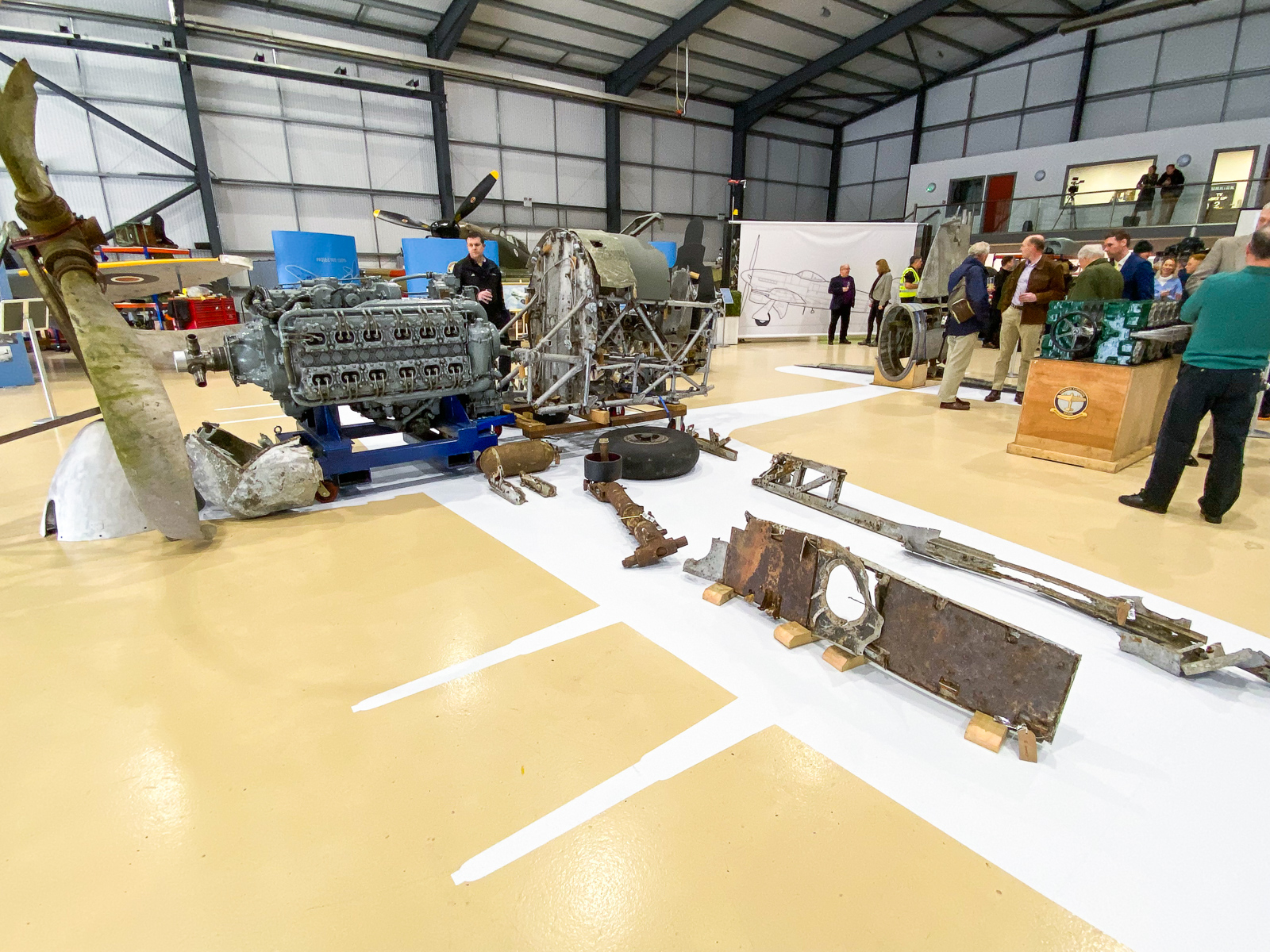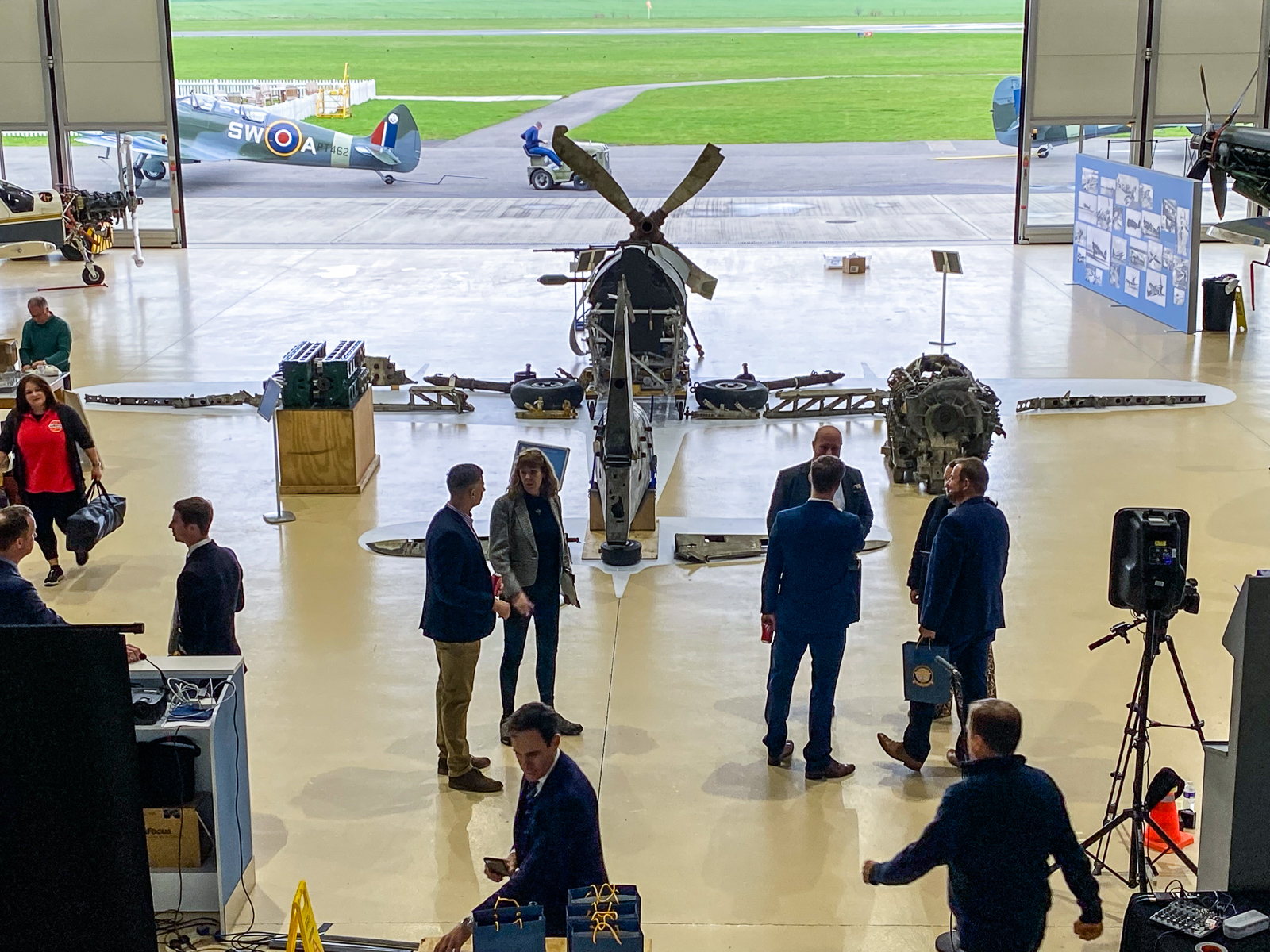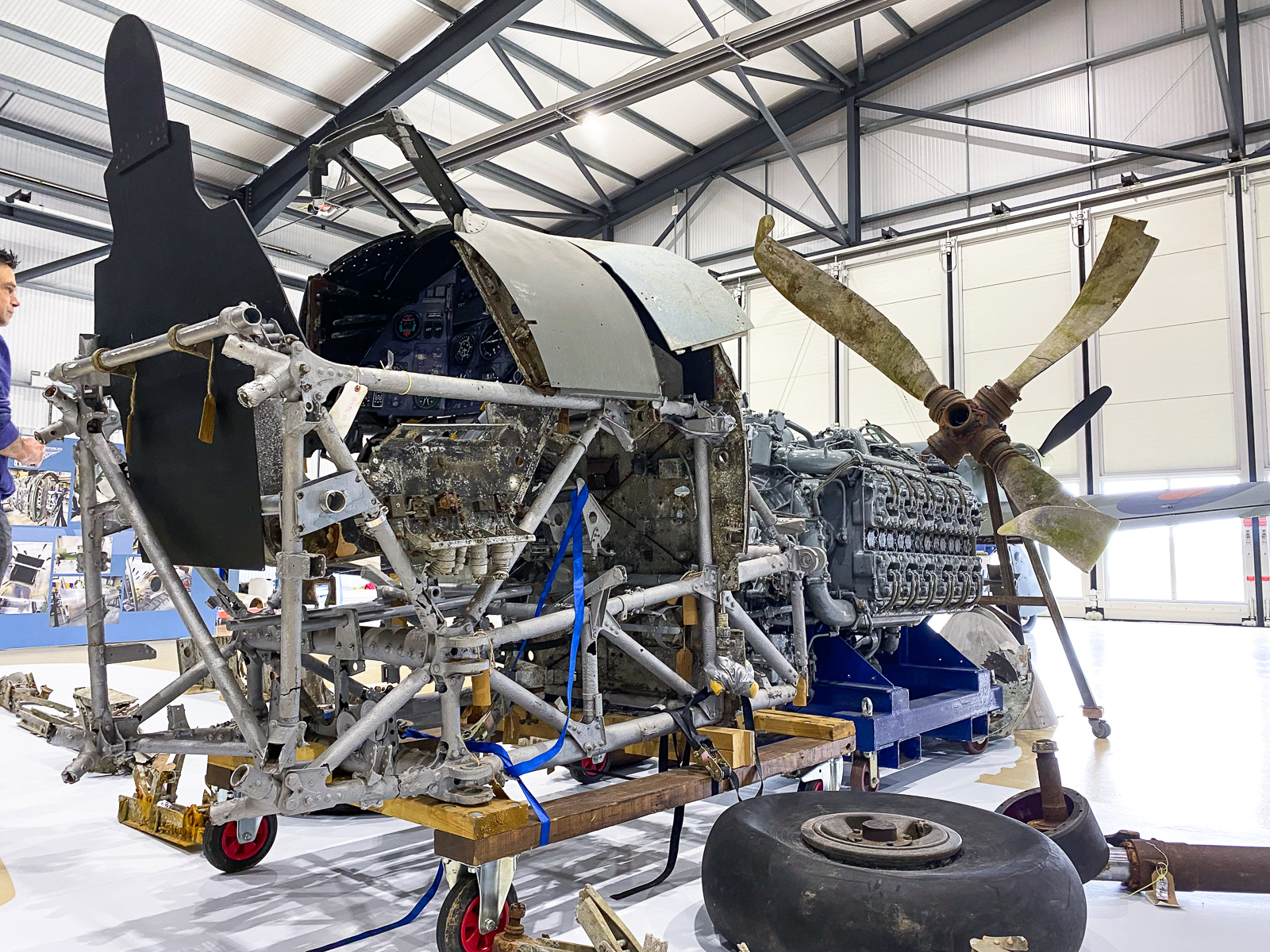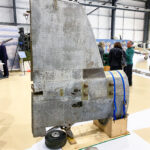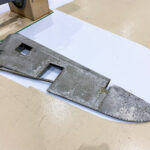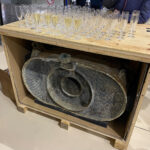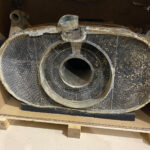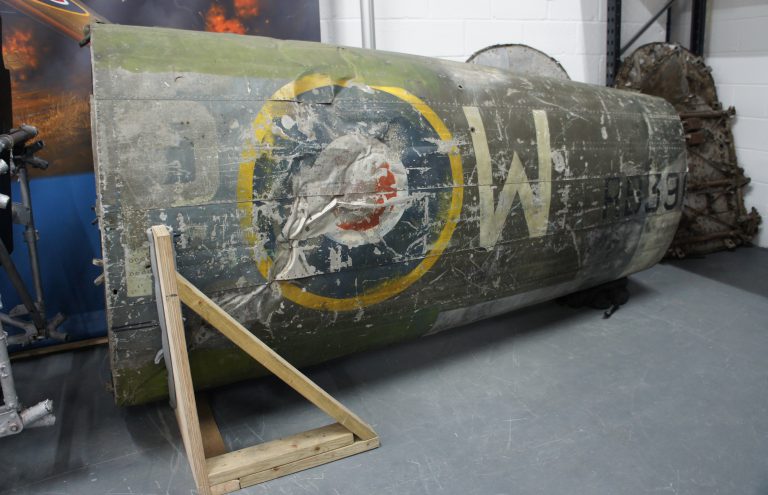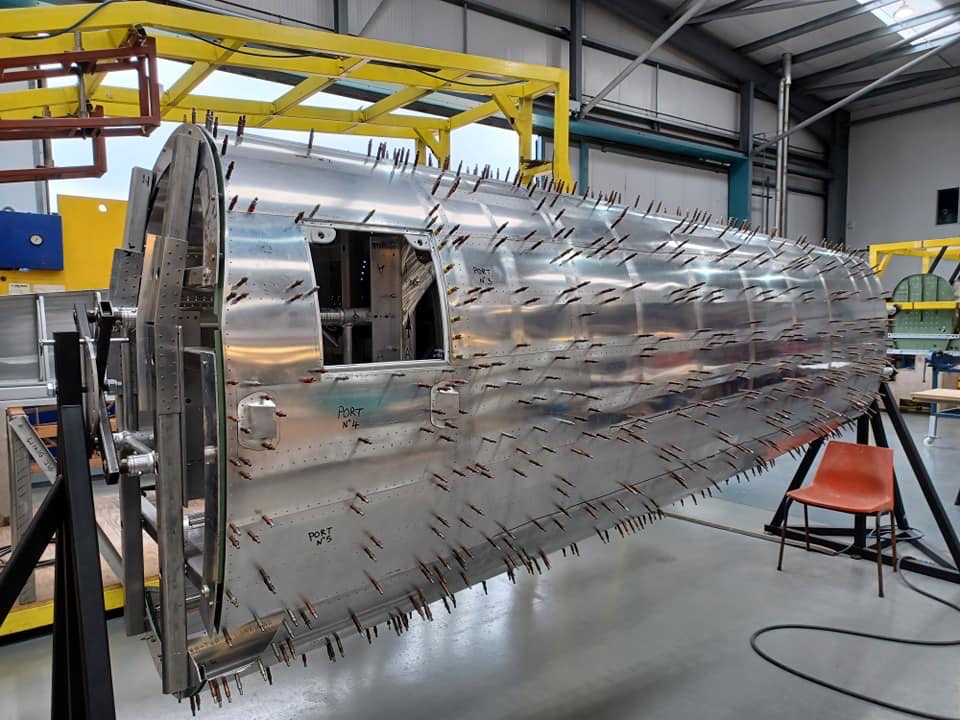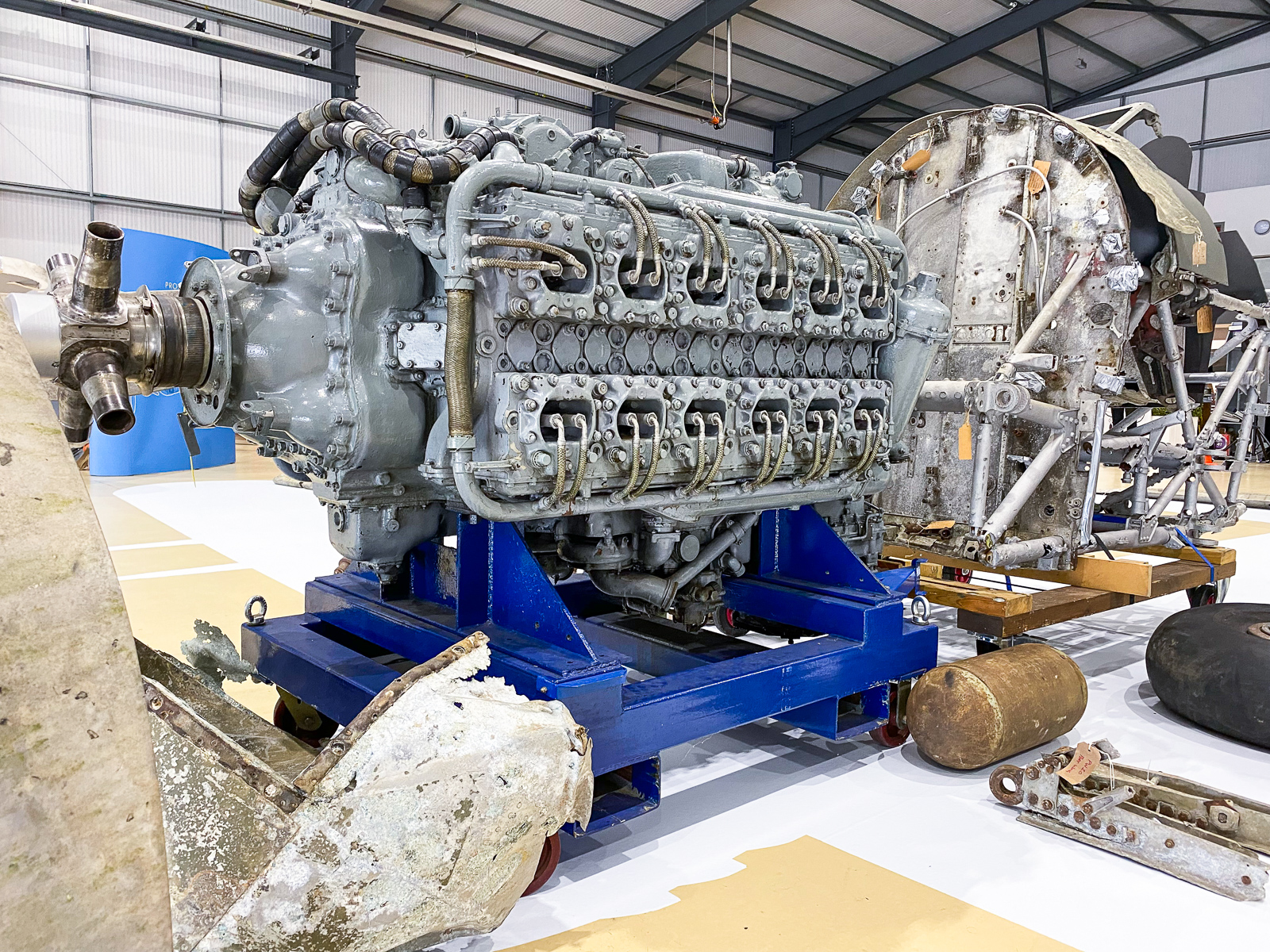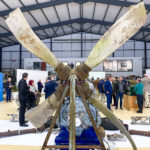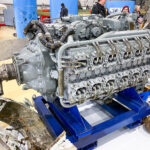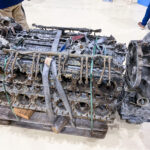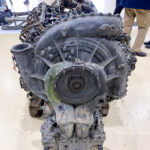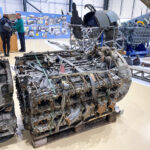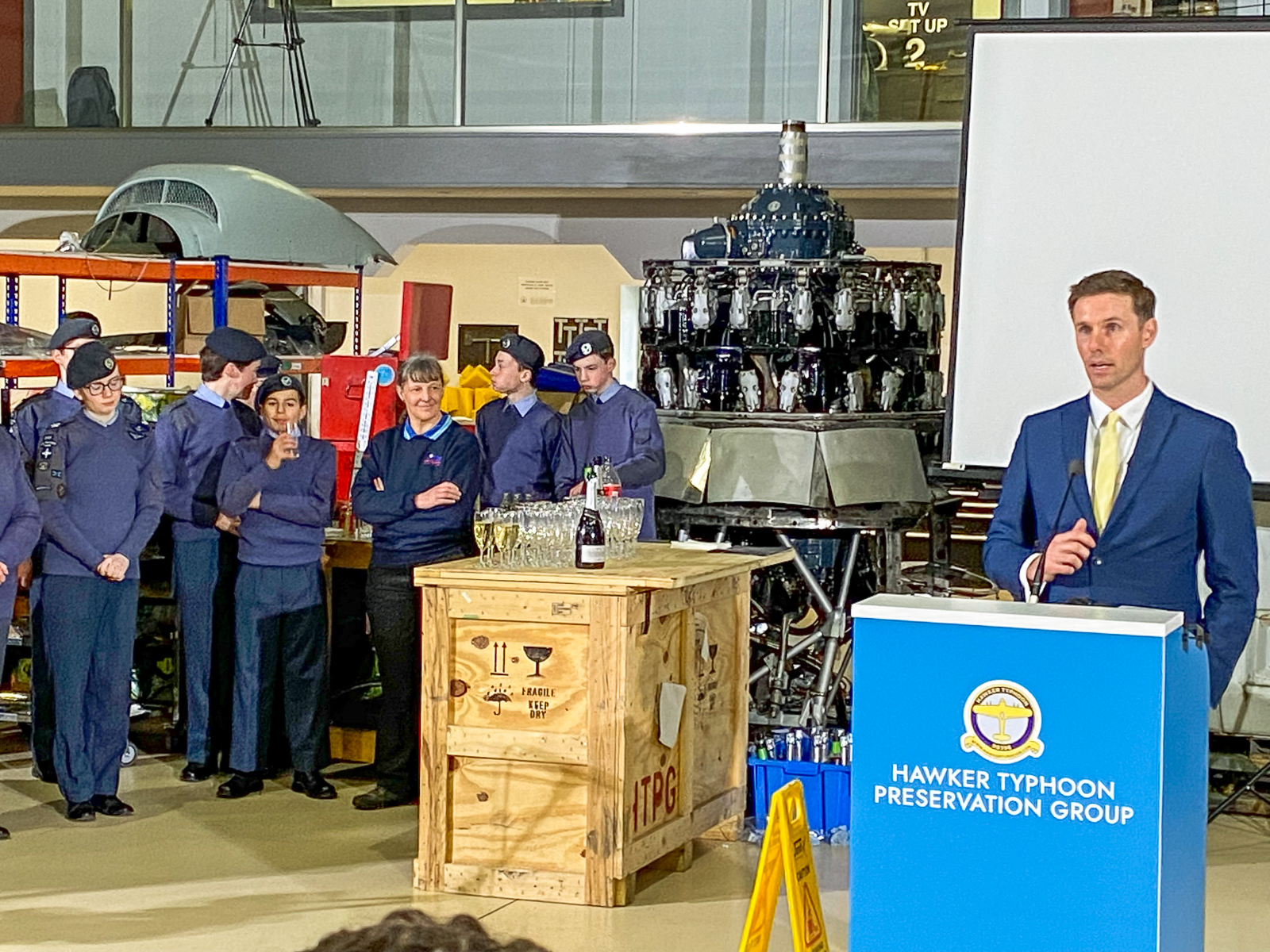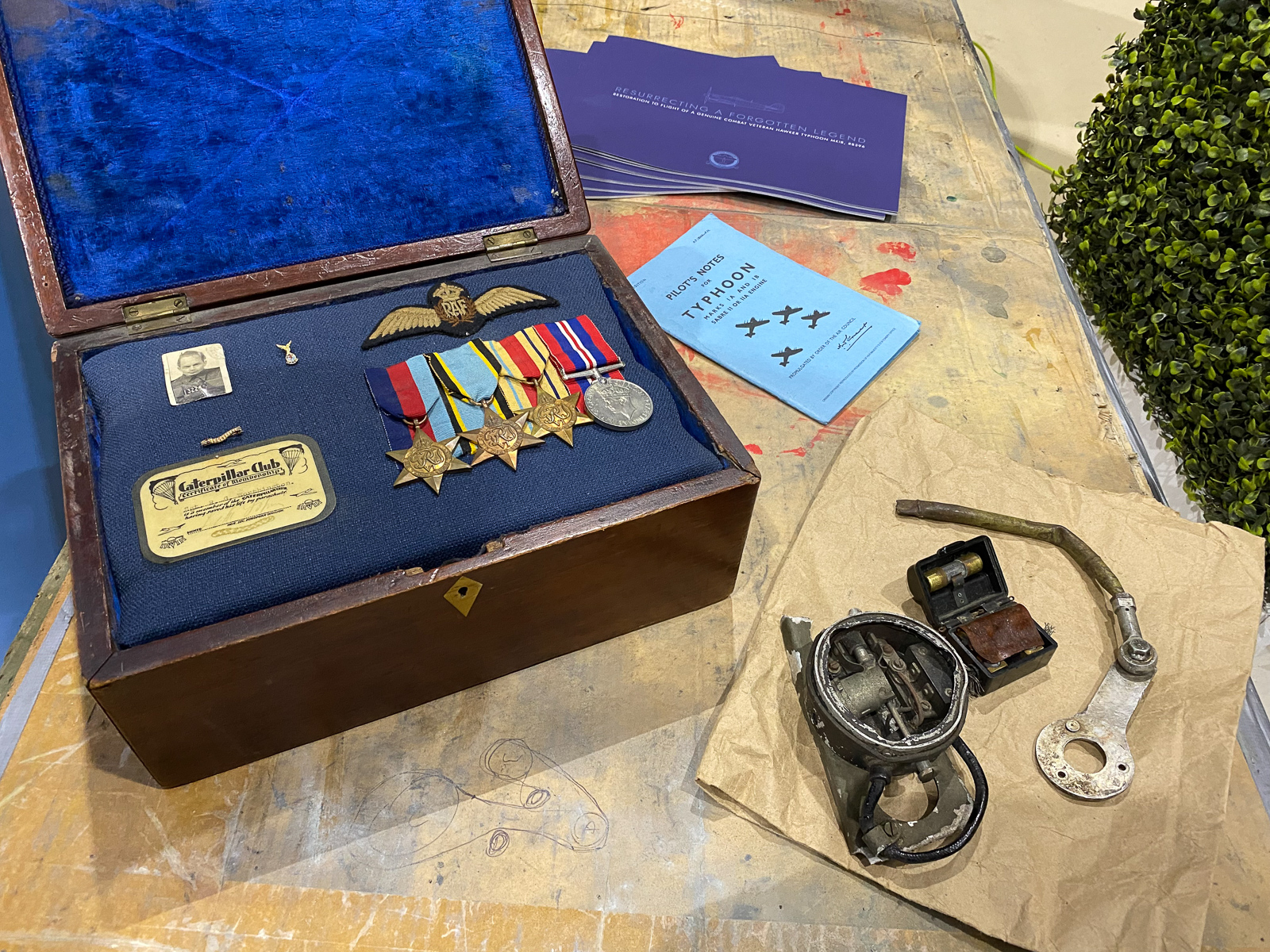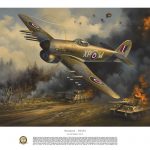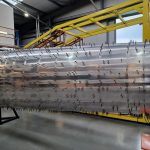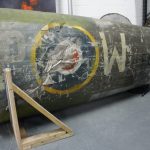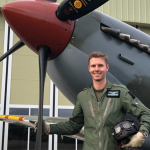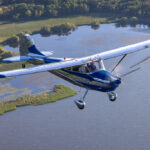We have been covering the efforts of the Hawker Typhoon Preservation Group and their quest to restore Hawker Typhoon Mk.Ib RB396 to flying condition for some years now. The organization held an event at their base of operations at Duxford Aerodrome on April 1st, 2023 – the 78th anniversary of the aircraft’s shoot-down over the Netherlands during WWII. Charlotte Bailey was on hand to cover the proceedings for Vintage Aviation News, and we hope you enjoy her report below…
Hawker Typhoon RB396 Restoration Project Update
by Charlotte Bailey
On April 1st, 2023, the Hawker Typhoon Preservation Group (HTPG) (a UK-based charity) announced the latest stage of their ambitious project to return Hawker Typhoon Mk.Ib RB396 to airworthy condition.
In the center of the Aircraft Restoration Company’s (ARCo) hangar in Duxford, Cambridgeshire, a white silhouette on the floor outlines an ambitious intention. The shape of things to come, this aspirational outline – a Hawker Typhoon Mk.Ib – hints at an airframe that, when complete, will serve as a “living memorial” to the 666 pilots who lost their lives while flying the type during WWII.

Admittedly, an initial glance at the assorted collection of pieces laid out like a part-assembled jigsaw reveals the scale of the work yet to be completed by this volunteer-run, passion-driven project. However, in the words of patron Air Marshall Cliff Spink, the puzzle pieces here are a metaphor for the type itself; “Such a significant aircraft missing from the historical jigsaw.” Unlike other WWII-vintage combat aircraft types which continue to inspire future generations as aerial ambassadors, the Typhoon is virtually extinct, with just a single, complete example in preservation, this being MN235 on static display at RAF Museum London. HTPG is eager to address this deficit, by resurrecting RB396’s bones to produce an airworthy Typhoon for the world.
Despite its significant role in helping turn the tide of the war – specifically for its prowess during the Battle of Normandy – 56% of all Typhoon pilots lost their lives while flying this pivotal, ground-attack fighter. Thus the HTPG formed in 2016 with the intention of creating a “national memorial” to serve as the “lasting legacy these brave men and women deserve.”
The project has moved forwards with some pace since those early days, and the unveiling at Duxford showcasing its present status comes at a notable anniversary for the airframe in question. RB396, a late-production model (of 3,317 total Typhoons built) rolled off the line at the Gloster Aircraft Company’s factory in Hucclecote, Gloucestershire during November 1944, with No.174 Squadron RAF taking delivery soon after. During her brief military career, RB396 flew 35 combat sorties, taking flak damage on 18 separate occasions until fate eventually had its way on April Fool’s Day in 1945. RB396’s pilot Flt Lt Chris House force-landed the Typhoon in a field near Denekampin in occupied Holland. The aircraft lay where it fell until cut up for scrap following the war. Somehow, the battered rear fuselage survived to make its way into a Dutch museum, which eventually sold the precious relic to HTPG’s founders, who transported it to the UK in 2012.
Since then, work to redress that damage has been underway, starting with the rear fuselage section which is approaching the final stages of its restoration with Airframe Assemblies at Sandown on the Isle of Wight. I am told that the team possesses the majority of the required elements (save some missing wing data) for the build, although the distinctive radiator will hopefully serve a greater significance than propping up as a makeshift bar at today’s event.
The intended engine – a factory-inhibited, zero-timed, 24-cylinder Napier Sabre Mk.IIa – came via donation from Cranfield University in 2016, and will ultimately power RB396’s return to flight. This engine is a lynchpin for the project, as barely a handful of rebuildable Sabres remain in existence. Crucially, the group has secured full engineering support from Rolls-Royce (Napier’s successor) for the powerplant; a collaboration four years in the making and described as critical to the project’s success.
Sam Worthington-Leese, project director and trustee, also has a significant element to add to the build: a lever from the throttle quadrant of Typhoon Mk.Ib MN252. Recovered from a crash site in Holland many years ago, the component belonged to a No.184 Squadron ‘Tiffie’ which Sam’s grandfather, Roy Worthington, was flying when he had to bail out over Holland on May 21st, 1944. “It’s not really a dream anymore – we’re making it a reality,” notes Sam, who stresses the importance of engaging new generations with the HTPG’s endeavors. Working with the Lincolnshire College Group, the project will support “as many apprenticeships as it can handle”; teaching heritage skills while also serving a vital STEM educational role.
Another staunch supporter of the project is 100-year-old Bernard Gardiner, a veteran Typhoon pilot who flew 71 combat operations. Gardiner is believed to be one of only four surviving Typhoon pilots worldwide, and noted that he would “love to see it fly and hear the sound of the Sabre one more time.”
Although the rebuild could be complete in as little as five years, the team is looking to raise approximately £6 million to ensure that the dream becomes a reality. Five tiers of support are available – bronze, silver, gold, platinum and diamond. More information for how readers can support this important project is available HERE
Many thanks to Charlotte Bailey for this engaging report. For those who wish to read more of Charlotte’s work, she recently published an impressive book covering the de Havilland Vampire. She interviewed more than fifty service pilots to fill her book Vampire Boys: True Tales from Operators of the RAF’s First Single-Engined Jet with numerous first-person accounts for what it was like to fly this early jet-fighter!








